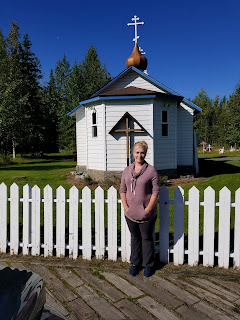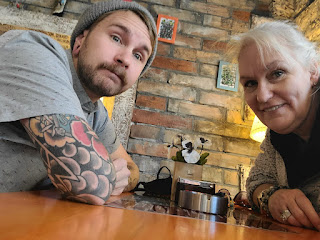Ghost towns of Nevada
My oldest daughter was born in Elko Nevada, a small town that is supported by gold mining, cattle ranching and tourism. Elko was founded as a railroad town site in 1869 and has grown to be the biggest town in Elko County as well as the county seat.
All four of my children spent some part of their childhood living in Elko and the surrounding areas. My favorite pastime while living there was to pack up the kids and go explore the numerous ghost towns that easily reached on an afternoon drive.
Metropolis Nevada is a ghost town in Elko County, 12 miles northwest of Wells. Interestingly this ghost town was never a gold mining town, instead it was founded in 1910 by the Pacific Reclamation Company of New York. The vision was a booming metropolis were 7,500 people could live and support themselves by growing wheat. If you have ever been to Nevada you can see how I have a hard time understanding that vision in this high desert land.
In the beginning the company hired a contractor from Salt Lake City to build a damn in hops of using it for irrigation and many members of the LDS church were encouraged to move to this new town; as a result Metropolis was a predominantly Mormon community, but no church was ever built so the church members used the towns amusement hall as their meetinghouse. Along with the amusement hall a spur to the railroad in Wells was built, a post office, a school and a modern 3 story brick hotel were added.
In the beginning the town appeared to be a success but as it turns out the contractor had failed to gain the proper water rights and as a result the residents were unable to irrigate their crops. A series of events to include jackrabbits eating the wheat, low levels of rain and finally Mormon crickets wiping out the crops caused the Pacific Reclamation Company to declare bankruptcy in 1920. In 1922 the railroad stopped service to the town and by 1924 there were only 200 people left in the town. In 1925 the hotel and the amusement hall caught fire and burned and the last store closed its doors with the post office closing in 1942.
A few people hung on making their living by ranching but for the most part this once promising town was a ghost town by 1950. Today ranches still operate in the area and you can drive a fairly well maintained dirt road to the site of the old town. The archway and stairs of the old school remain allowing visitors to climb the stairs and stand in what was once the school, the basement still stands as well and at your own risk you can walk down the stairs and explore. Remains of the hotel also stood on my last trip there ( it has been over 20 years since I have been there so I cannot guarantee it is still there).
If you have a four wheel drive you can travel a bit further up road and explore the old cemetery as well, it was located behind a gate, that was usually left unlocked and up a rather washed out dirt road. If you can make it the cemetery holds the remains of many of the early settlers to this area.
Jarbidge Nevada was the last big gold boomtown in Nevada, established in 1909. An early Shoshone Indian legend said that a giant cannibal they called Tsawhawbitts lived in the nearby canyon and devoured unsuspecting victims, because of this and the remoteness of the area neither Indian nor prospector spent much time here until tales of a miner Dave Bourne finding a great deal of gold in the canyon in 1909. When news of this find got out prospectors from all over made their way to the canyon in hopes of finding their own riches.
The name Jarbridge comes from the early settlers mispronouncing Tsawhawbitts ( pronounced "tuh-saws-haw-bits) instead they pronounced it ( " Jah-ha-bich") and the name Jarbridge evolved.
The mine in Jarbridge was at one time the largest producing mine in the Nevada with the Elkoro Mining company operating from 1913 to 1930 and reporting they removed 10million dollars in gold during that time.
Major mining operations were suspended in 1941 though small claims continue to operate in this area. While this town is no longer a booming gold town it does continue to host a few year round residents and welcomes tourists to the camp ground and bed and breakfast in town.
Visitors can see old miners cabins, the old brothel and the old jail.
Tuscarora Nevada Gold was discovered here in the late 1800 but lack of water made it difficult to mine. In 1871 silver veins were found and the old gold camp site was left to the Chinese who had come to build the railroad and stayed. The old site became the second largest Chinatown east of San Francisco. During its peak Tuscarora had 3300 residents but by 1870 the gold and silver production had slowed and the residents dropped to 1000. Today there are just under 150 people living in this desert town.
I love this town because many of the building still stand as well as the old cemetery. The kids and I spent several weekend afternoons walking among the old buildings and reading headstones in the small cemetery.
All four of my children spent some part of their childhood living in Elko and the surrounding areas. My favorite pastime while living there was to pack up the kids and go explore the numerous ghost towns that easily reached on an afternoon drive.
Metropolis Nevada is a ghost town in Elko County, 12 miles northwest of Wells. Interestingly this ghost town was never a gold mining town, instead it was founded in 1910 by the Pacific Reclamation Company of New York. The vision was a booming metropolis were 7,500 people could live and support themselves by growing wheat. If you have ever been to Nevada you can see how I have a hard time understanding that vision in this high desert land.
In the beginning the company hired a contractor from Salt Lake City to build a damn in hops of using it for irrigation and many members of the LDS church were encouraged to move to this new town; as a result Metropolis was a predominantly Mormon community, but no church was ever built so the church members used the towns amusement hall as their meetinghouse. Along with the amusement hall a spur to the railroad in Wells was built, a post office, a school and a modern 3 story brick hotel were added.
In the beginning the town appeared to be a success but as it turns out the contractor had failed to gain the proper water rights and as a result the residents were unable to irrigate their crops. A series of events to include jackrabbits eating the wheat, low levels of rain and finally Mormon crickets wiping out the crops caused the Pacific Reclamation Company to declare bankruptcy in 1920. In 1922 the railroad stopped service to the town and by 1924 there were only 200 people left in the town. In 1925 the hotel and the amusement hall caught fire and burned and the last store closed its doors with the post office closing in 1942.
A few people hung on making their living by ranching but for the most part this once promising town was a ghost town by 1950. Today ranches still operate in the area and you can drive a fairly well maintained dirt road to the site of the old town. The archway and stairs of the old school remain allowing visitors to climb the stairs and stand in what was once the school, the basement still stands as well and at your own risk you can walk down the stairs and explore. Remains of the hotel also stood on my last trip there ( it has been over 20 years since I have been there so I cannot guarantee it is still there).
If you have a four wheel drive you can travel a bit further up road and explore the old cemetery as well, it was located behind a gate, that was usually left unlocked and up a rather washed out dirt road. If you can make it the cemetery holds the remains of many of the early settlers to this area.
Jarbidge Nevada was the last big gold boomtown in Nevada, established in 1909. An early Shoshone Indian legend said that a giant cannibal they called Tsawhawbitts lived in the nearby canyon and devoured unsuspecting victims, because of this and the remoteness of the area neither Indian nor prospector spent much time here until tales of a miner Dave Bourne finding a great deal of gold in the canyon in 1909. When news of this find got out prospectors from all over made their way to the canyon in hopes of finding their own riches.
The name Jarbridge comes from the early settlers mispronouncing Tsawhawbitts ( pronounced "tuh-saws-haw-bits) instead they pronounced it ( " Jah-ha-bich") and the name Jarbridge evolved.
The mine in Jarbridge was at one time the largest producing mine in the Nevada with the Elkoro Mining company operating from 1913 to 1930 and reporting they removed 10million dollars in gold during that time.
Major mining operations were suspended in 1941 though small claims continue to operate in this area. While this town is no longer a booming gold town it does continue to host a few year round residents and welcomes tourists to the camp ground and bed and breakfast in town.
Visitors can see old miners cabins, the old brothel and the old jail.
Tuscarora Nevada Gold was discovered here in the late 1800 but lack of water made it difficult to mine. In 1871 silver veins were found and the old gold camp site was left to the Chinese who had come to build the railroad and stayed. The old site became the second largest Chinatown east of San Francisco. During its peak Tuscarora had 3300 residents but by 1870 the gold and silver production had slowed and the residents dropped to 1000. Today there are just under 150 people living in this desert town.
I love this town because many of the building still stand as well as the old cemetery. The kids and I spent several weekend afternoons walking among the old buildings and reading headstones in the small cemetery.



Comments
Post a Comment